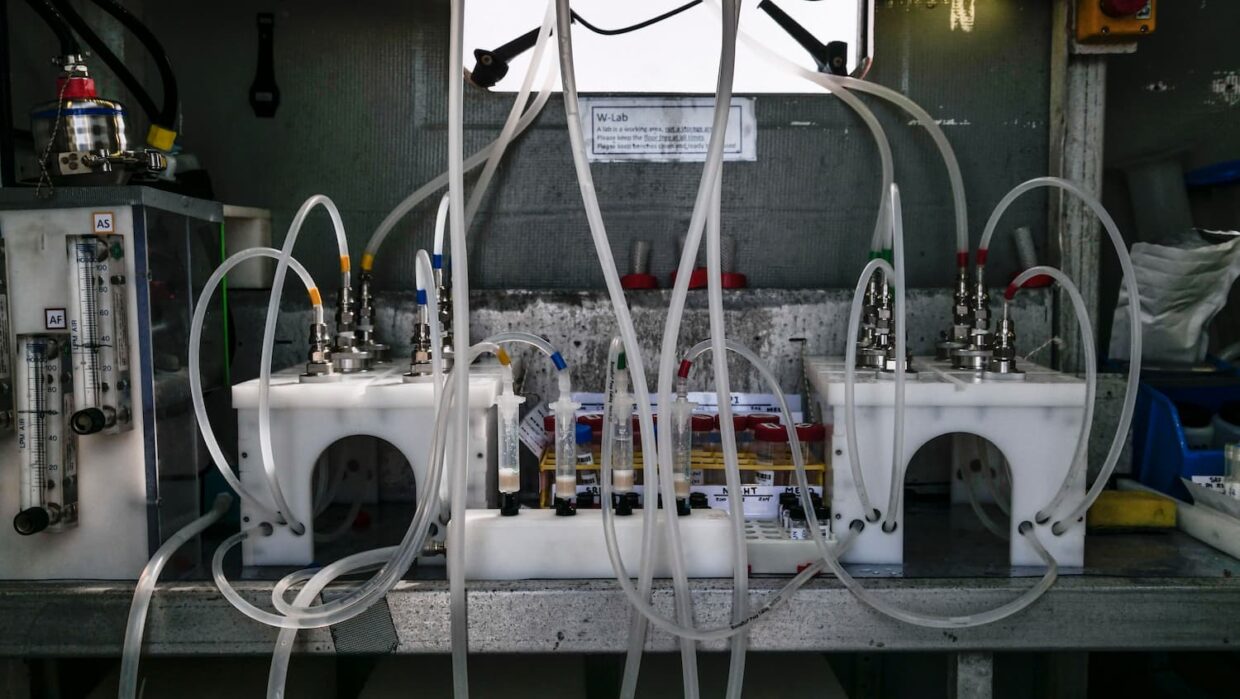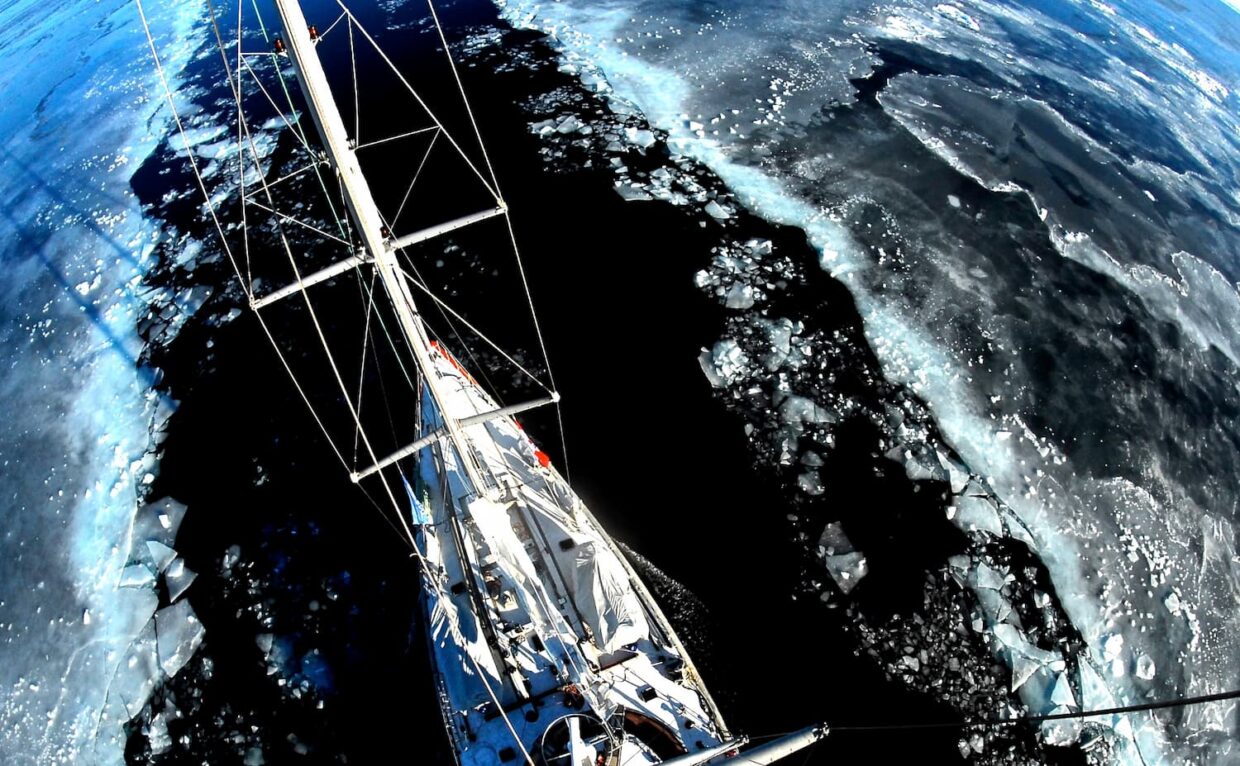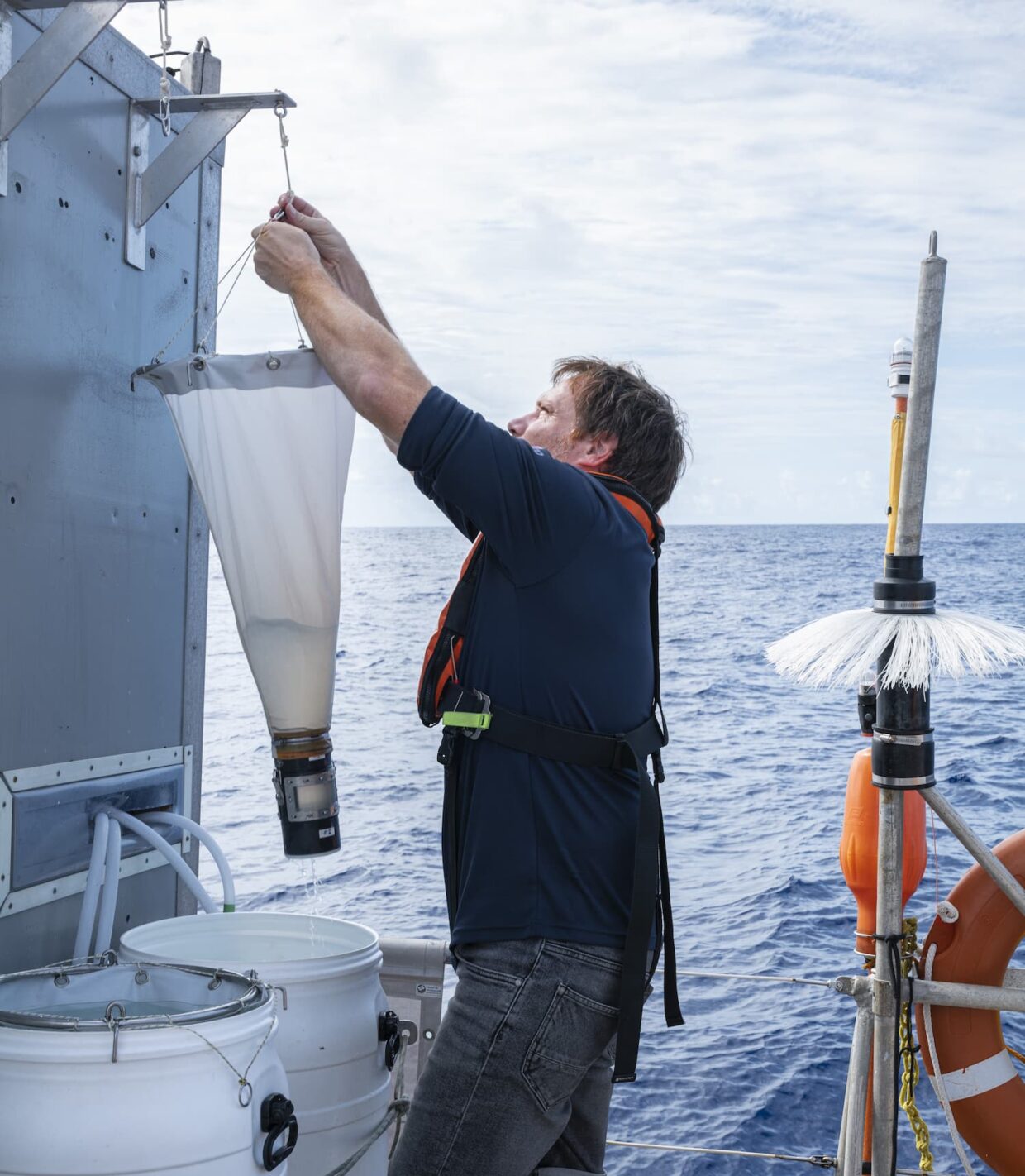The plankton paradox: Unprecedented cooperationbetween bacteria in the Ocean
A team of CNRS researchers, led by Dr. Samuel Chaffron, developed a model based on data from the Tara Oceans expedition (2009-2013) to explain the plankton paradox: Ocean microorganisms of astonishing diversity should be competing, but instead collaborate. Article published in Nature Communications on March 28, 2024.

Better understanding plankton diversity thanks to the data collected during the Tara Oceans expedition
The plankton paradox was described by ecologist George E. Hutchinson in 1961: A very great diversity of plankton can be observed on the ocean surface despite limited nutrient resources for which these organisms are in constant competition.
This led a team of researchers, headed by Dr. Samuel Chaffron to wonder: Can ecological interactions at the molecular level, including exchanges of certain metabolites*, partly explain this paradox?
This research was carried out using data from the Tara Oceans expedition. For 4 years (2009-2013), Tara sailed across the world Ocean, including the Arctic Basin, studying plankton.
The free-access database established from the collected samples makes it possible, for the first time, to map the genomic diversity of marine plankton on a global scale.
Samuel Chaffron and his team relied on these data to:
- identify which species are present in the studied areas 50
- understand why and how they interact.
What are environmental genomic (aka metagenomic) data?
This study uses environmental genomic data. Metagenomics was born just 20 years ago and has revolutionized our knowledge and understanding of microbial ecosystems. It provides precise access to the diversity of the species present, as well as their molecular functions.
To generate metagenomic data, the different Ocean basins must be sampled. Thanks to many scientific expeditions, this type of data exists. In the past, oceanographic campaigns carried out this type of sampling. But, Tara, in collaboration with partner laboratories, extended standardized collecting protocols on a global scale, and in addition, included all sizes of marine plankton organisms. For several years, Tara has made this information available to all researchers via the world’s largest open-access plankton database.
The model developed in this study uses ecological and metabolic data:
- Ecological information includes criteria about the physical and biological environment such as air (including greenhouse gases), water, soil, flora and fauna, habitat, energy, noise, waste and other contaminants, pollutant emissions, crops, etc.
The ecological information used in this modeling corresponds to the identified biotic associations (which species co-exist) and the physical and chemical (abiotic) conditions in which these associations among species are found.
- Metabolic information refers to the chemical and physical processes that take place within organisms to maintain life. They provide insight into how cells and organisms gain and use energy, and how they produce the elements necessary to function.
The metabolic information used in this study corresponds to the metabolic maps reconstructed for each species for which a genome was available, often remodeled from metagenomic data. These maps represent all possible chemical reactions in an organism, catalyzed by enzymes (which are proteins) specific to each reaction. They also identify which molecules are consumed and produced by a given organism.

Bacterial interactions essential for the planet: the great discoveries of this study
Marine microorganisms form complex and dynamic networks. By interacting with each other, they play a crucial ecological role for the planet (carbon sequestration, oxygen production, primary links in the food chain).
1- Exchange of vitamins between various bacteria of the epipelagic zone
Various plankton organisms such as protists or multicellular organisms have the ability to cooperate with each other, even though very few examples of cooperation, symbiosis and metabolic interactions are known so far.
The scientific team therefore focused on bacteria because they too are able to cooperate. For instance, they produce vitamin B12 that is essential for some major phytoplankton species, such as diatoms. Also, from a technical point of view, their overall metabolism and metabolic map are currently best characterized.
In this first study, researchers limited themselves to investigating the epipelagic zone (superficial zone between 0 and 200 meters deep, polar regions excluded) because this is where the data from the Tara Oceans expedition are most numerous.
“Thanks to the predictions of our computer models, we have identified many potential metabolic interactions between ocean surface bacteria. The most frequently predicted interactions correspond to exchanges of vitamins B (B1 and B6, in particular), as well as certain amino acids (such as arginine and glutamine),” Samuel Chaffron explains.
The research team will first continue its current analysis, then focus on polar regions and mesopelagic zones (between 200 and 1,000 m deep), which are very different environments and ecosystems.
“I was fortunate enough to participate in the collection of these data during the Tara Oceans Polar Circle expedition in 2013. I have an unforgettable memory of this 4-week leg between Lorient (France) and Tromsø (Norway) with a stopover in the Faroe Islands. For the present study, we didn’t use the data collected in the Arctic region, but this will be the next step in our work!” confides Samuel.

2- Temperature, light and nutrients: environmental factors influencing bacterial cooperation
Light rays and nutrients present in an area strongly influence the way bacterial communities interact. For instance, in nutrient-poor areas, a greater ability to cooperate is expected among bacteria.
“In this study, we didn’t directly relate predicted interactions to environmental factors, but we were able to highlight factors associated with the abundance and overall activity of surface bacterial communities. Temperature and light are strongly associated with their composition. Their activity is also deeply influenced by the concentration in nutrients (in particular, phosphate) and micronutrients, such as iron, co-factor essential for certain metabolic reactions,” explains Samuel.
3- Genome: true identity card of each organism, reflection of adaptation mechanisms
This study allowed us to understand the correlation between the presence of certain bacterial genes and the environment in which the organism lives. Thus, some parts of a microorganism community’s genome will be specific to its living space. If an ocean region is depleted in nutrients, this characteristic will appear in the genome of the species present.
Researchers predict that certain exchanges of complex molecules, costly energy-wise to synthesize, exist in the Ocean. Lab studies are currently underway to answer some useful questions in terms of evolution:
- What exactly are the elements exchanged (vitamins, amino acids, etc.)?
- How do these exchanges take place?
- How are they maintained in a specific area and over time, and through which mechanism?
4- Correlation between genome sizes, adaptation of species to their environment, and cooperation between species
An organism with a small-sized genome is generally more suited to a particular ecosystem.
This study shows that bacteria sampled in natural environments have smaller genomes than those grown in laboratories.
“The size of the genomes reconstructed from the metagenomes of samples from the Tara Oceans expedition are generally smaller. This necessarily implies that the characterized species are more specialized and better adapted to specific conditions, but also less resilient to drastic changes in their environment,” says Samuel.
Thus, species with smaller genomes are probably less prone to adapt and less resistant to changes in their environment. This can have drastic consequences for these communities in a context of climate change.
In conclusion, genome size is important in the natural environment. Species that have a smaller genome appear to be more dependent on other organisms. Cooperation between species is thus expected to be more abundant in these communities.
“This is what seems to emerge from our results. We observed that species with larger genomes are often central in the network of ecological associations, and surrounded by species with smaller genomes, probably depending on them! Maintaining a smaller genome is more energy-efficient and allows for faster reproduction, but it can also be detrimental in the event of drastic environmental changes.
The various discoveries highlighted in this study allow us to better understand the functioning of ocean microorganisms, in particular marine bacteria. They play a crucial role in marine ecosystems, being at the basis of the ocean food chain, recycling nutrients, just as trees and plants do on land.
Living organisms have real capacity for adaptation and cooperation. Increasing our knowledge and understanding it better helps better protect them!

Article written from an interview with Dr. Samuel Chaffron, CNRS researcher.
*Organic compounds